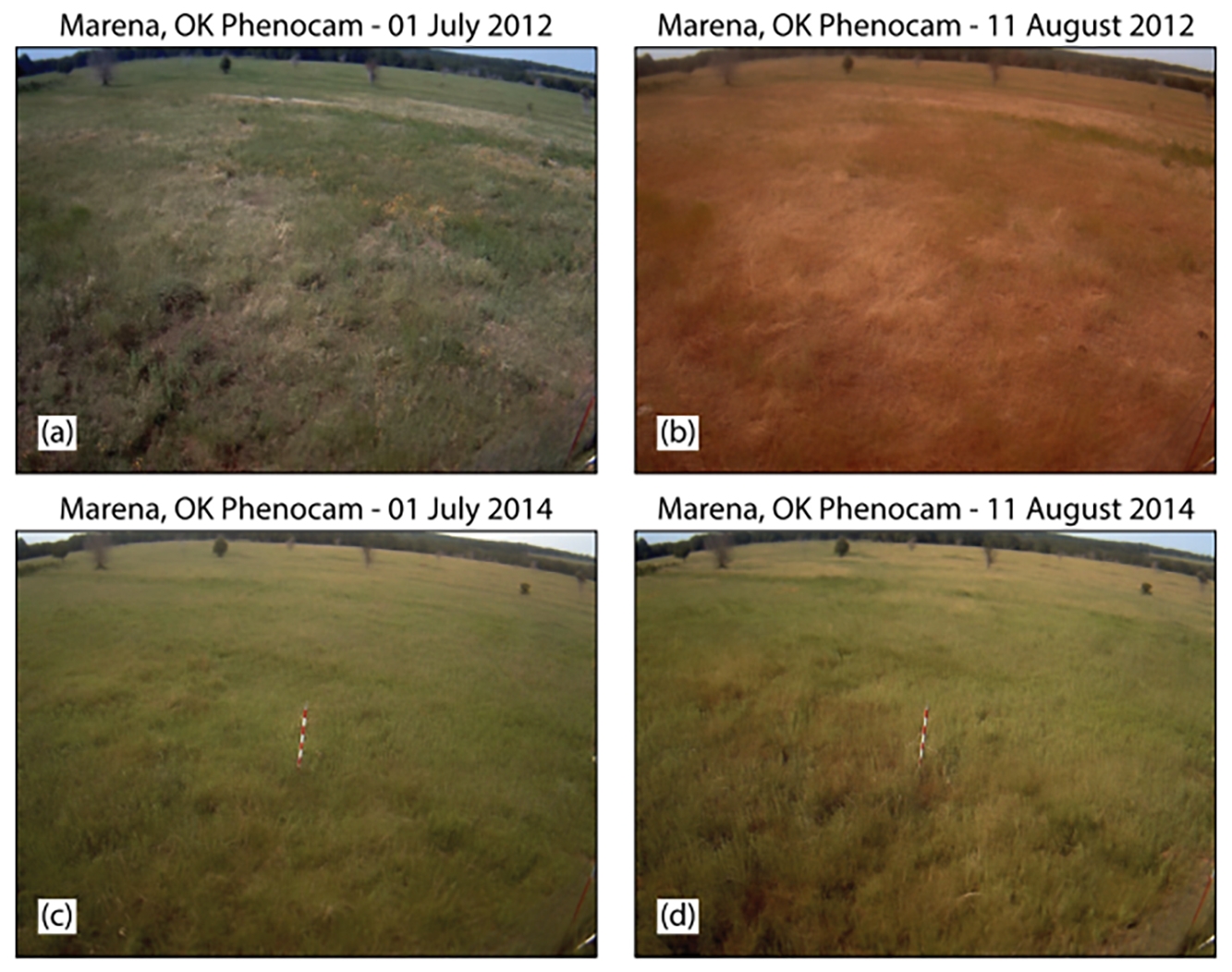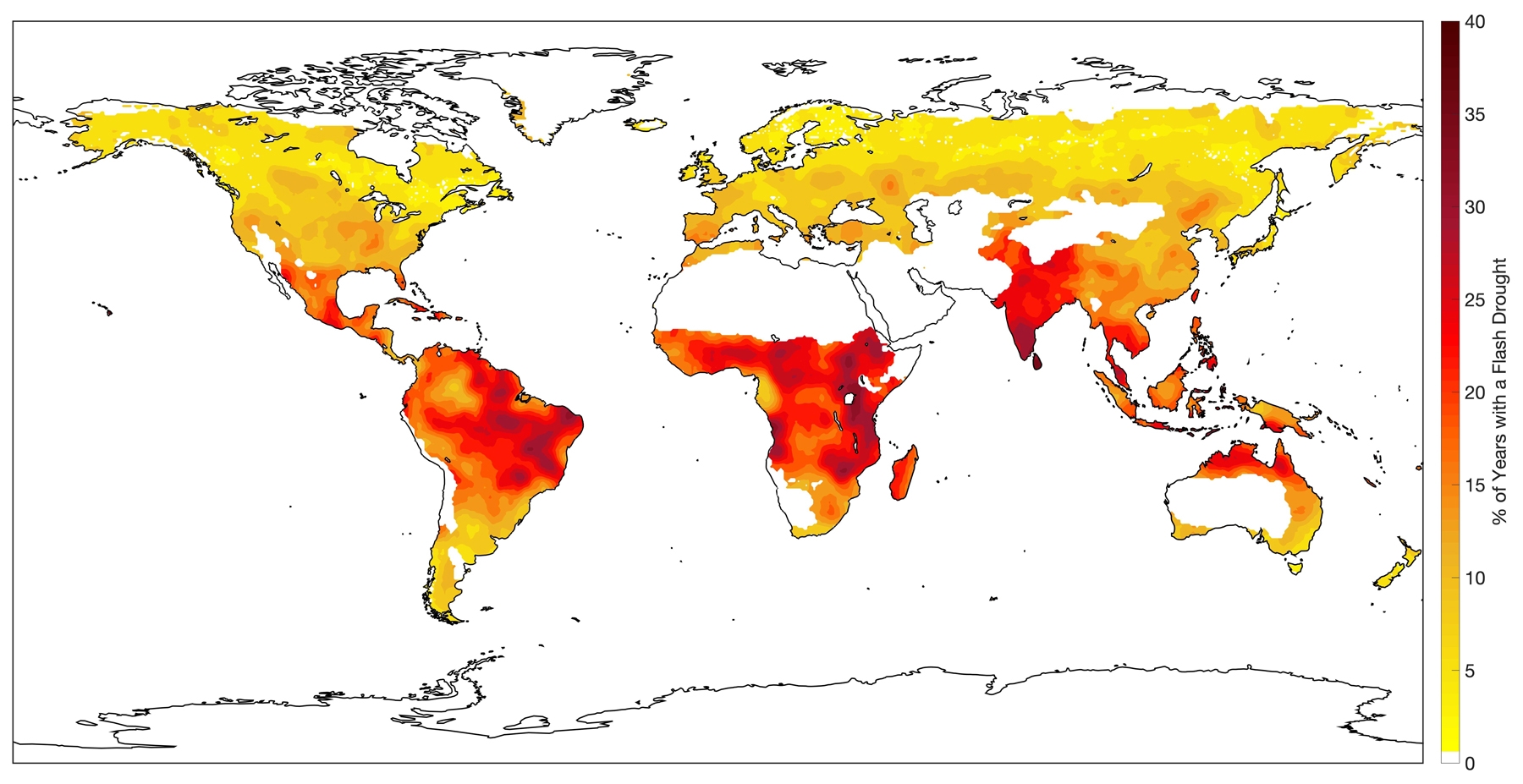“Going back into the early 2000s, there was a realization that these flash droughts happen,” Basara said. “Just as not all droughts are the same, some of these droughts evolve much faster than normal.
“This study is really important because although here in the U.S. we can often mitigate some of the effects with irrigation and other tools, a number of these types of events happen in places where they can’t be mitigated,” he added. “When that happens in areas dependent on subsistence living, where agricultural production is needed to survive, these types of events can be really devastating for the local system and create a lot of socioeconomic turmoil.”
The study identifies global “hotspots” for flash drought from 1980 through 2015. Of the 15 locations analyzed, eight were identified as having experienced both the most flash drought occurrences for their regions, and as being locations with at least 20% of their total land areas used for agricultural production.
“What’s interesting about flash droughts is they do have some preferential zones around the word,” Basara said. “One of the more interesting aspects of this particular work is that we were able to start to identify these zones. We often associate drought with a lack of rainfall. For these flash drought events, about half of the contributing factor is a lack of rainfall, the other half is what we call ‘hostile layer mass’ – it gets really hot and dry.”
The research team describes these regions as including the “Corn Belt” across the midwestern United States, barley production in the Iberian Peninsula, the wheat belt in western Russia, wheat production in Asia Minor, rice-producing regions in India and the Indochinese Peninsula, maize production in northeastern China, and millet and sorghum production across the Sahel.
Although six of the 15 regions experienced statistically significant increases in flash drought occurrences over the 36-year period examined in the study, three of the regions experienced a significant decline in flash drought frequency. The reason behind why some regions experienced increased occurrences while others decreased is still unknown.
“While several regions across the world have seen increasing or decreasing trends in flash drought over the last four decades, it is also critically important to know which regions may become more susceptible to flash drought risk in the future,” Christian said. “This is especially true in areas with agricultural production, as changes in frequency or timing of flash drought will create additional challenges during the growing season. This study provides a foundation to build off and explore key questions regarding future trends of flash drought occurrence.”
Christian added, “When flash drought events were examined, one thing was clear – timing is everything in terms of impacts from these events.”



